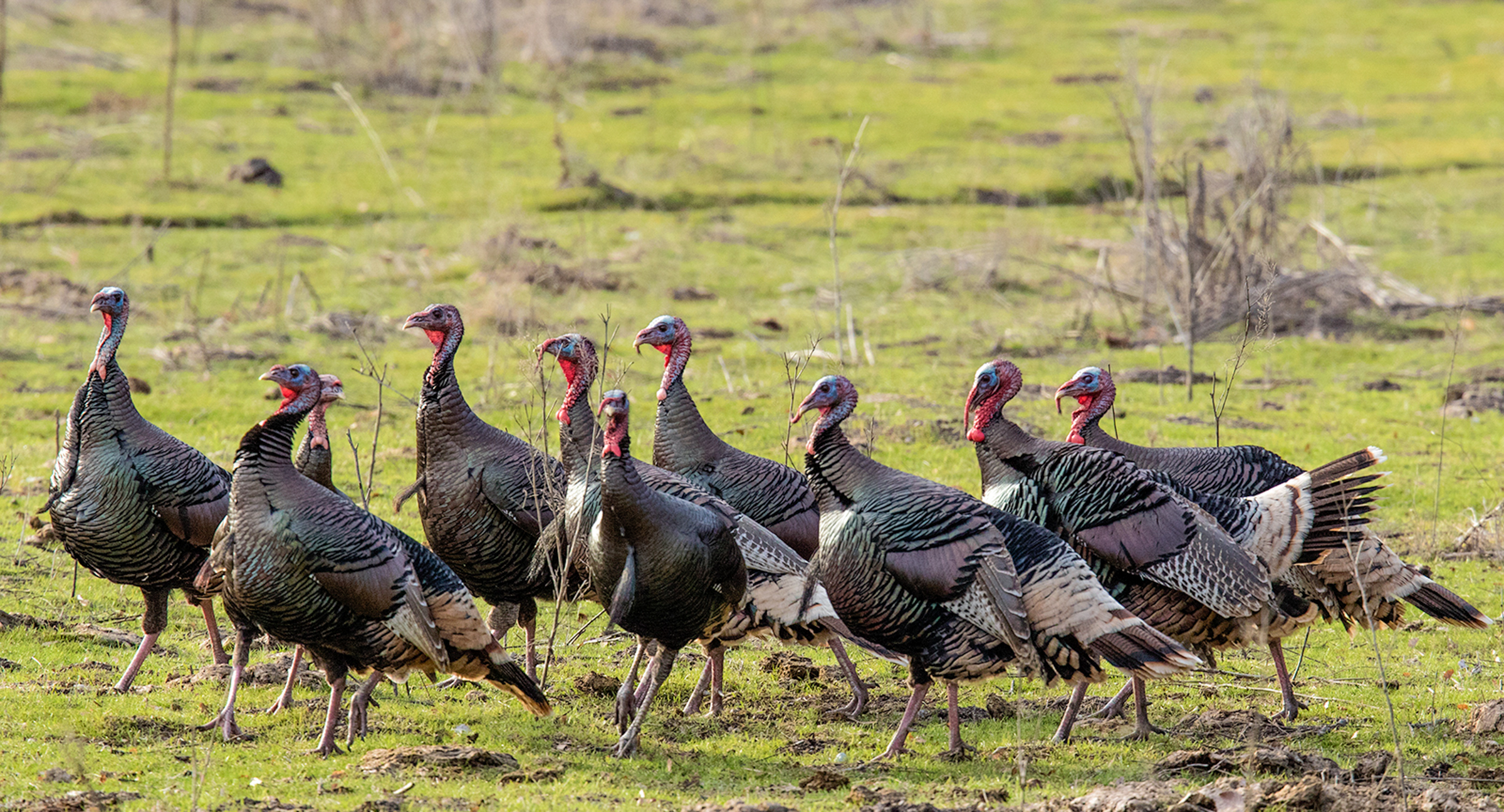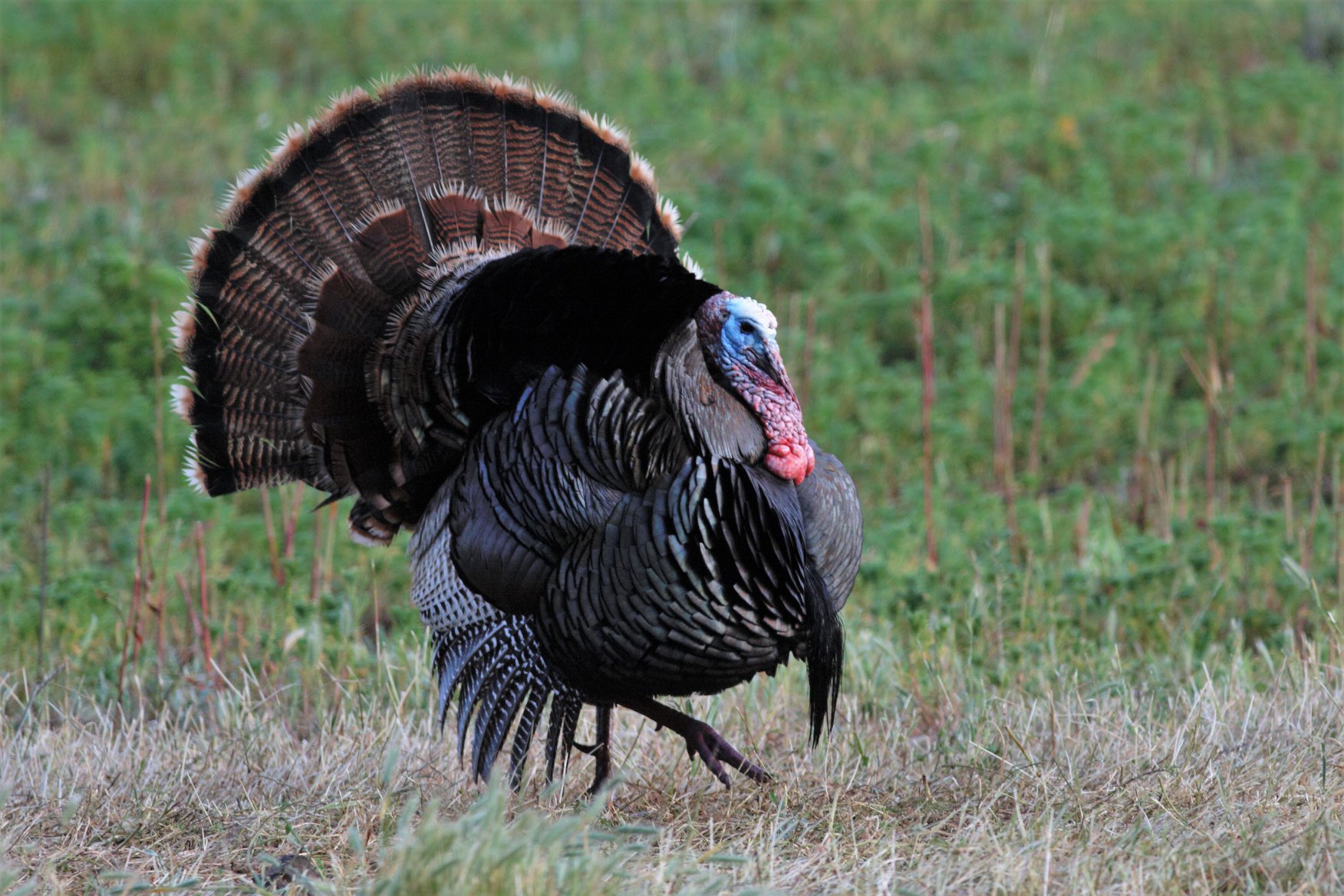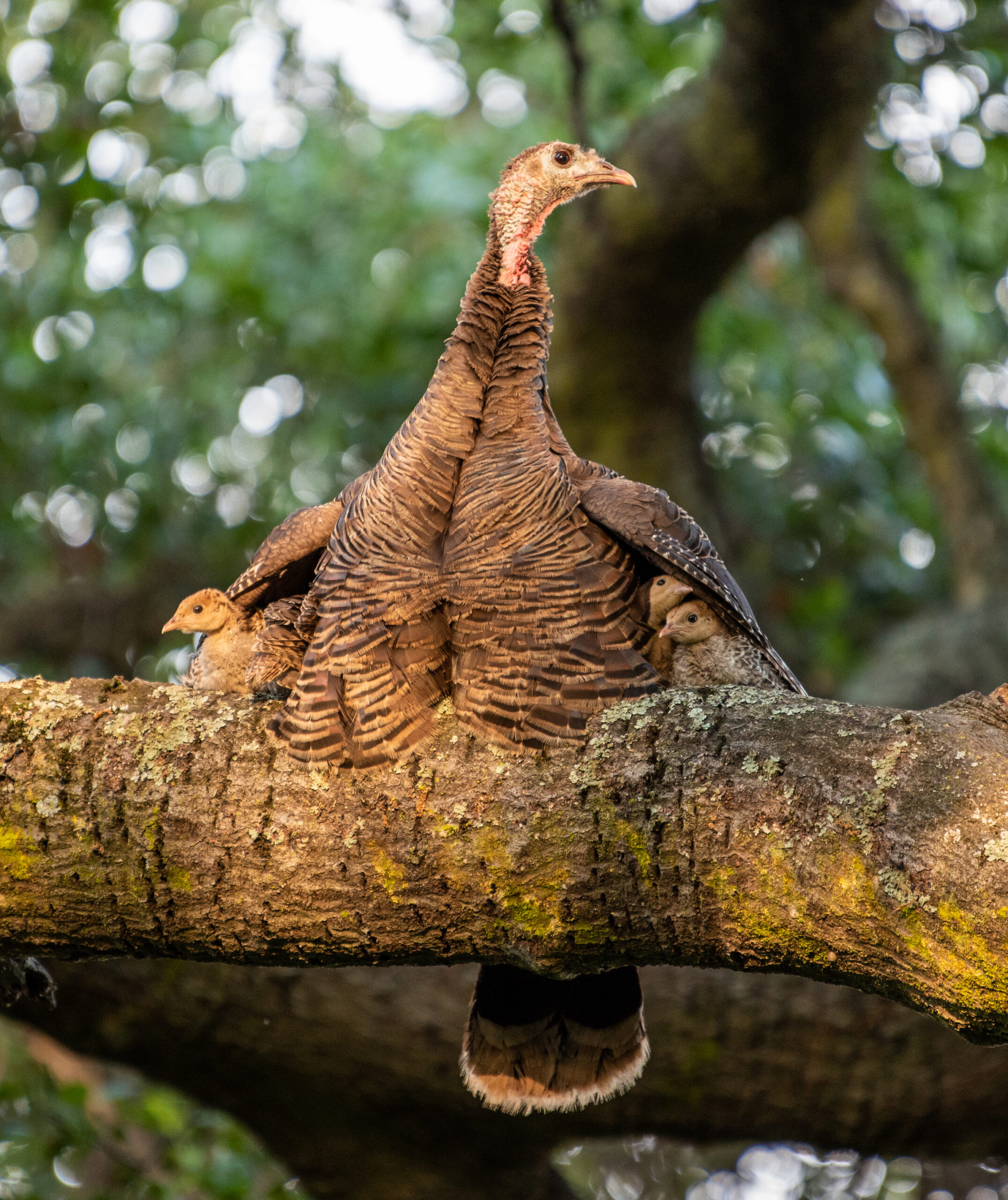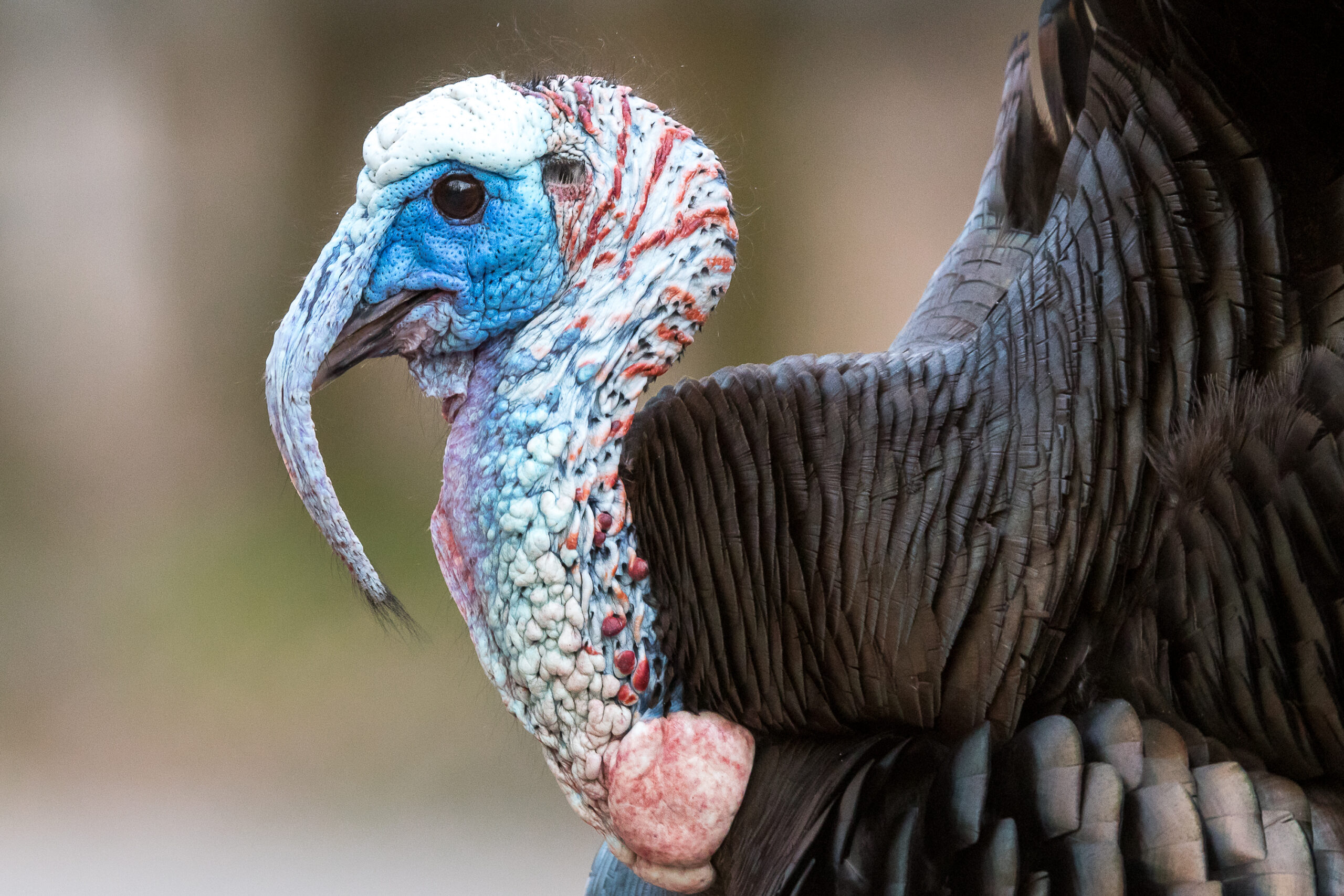BIRD LORE: The wild turkey
By Kay Cramer
Thanksgiving is almost upon us, and it is time to acknowledge the splendor, as well as the goofiness, of the central character of the feast!
Wild turkeys are very large and heavy game birds, native to North America. This is probably part of what made them so attractive for the first Thanksgiving. Most people know generally what the turkey looks like, since generations of schoolchildren have been tracing their hands and coloring in rainbow tails since kindergarten. But turkeys, while gorgeous, do not have a rainbow tail—they are an iridescent bronze color mainly, with barred wing feathers, a brown tail with black and cream bands, a chest beard that gets longer with age, and an odd bluish head, neck, snood (the nose drapery) and wattle (the chin skin).
Photo: Flock of Wild Turkeys: Christine Haines/Audubon Photography Awards 2015

The male turkeys are generally the only ones that do the open tail display, although some hens both display and grow beards. The toms (male turkeys) gather in clearings in the woods and gobble to attract female hens. This gobble can be heard for up to a mile! They also puff up and expel the air in a hissing puff, while dragging their wingtips on the ground and engaging in a stilted strut. Their bluish head, snood and wattle flush a bright red. The snood (google “turkey snood”!) lets down from a pointy horn-like extension above the bill to a draped pendulous skin over the bill. Pretty irresistible to the hens! If you are near one, you can induce him to display by mimicking the female cluck or chirp.
Photo: Handsome Tom: Clark Peterson/Audubon Photography Awards 2019

The outcome of this display is a clutch of 4-17 turkey eggs laid in a ground nest. These hatch into baby turkeys, called poults. For the first 4 weeks of life, poults scarf down as many insects as possible, using the protein to grow.
After that, turkeys are omnivorous, eating plants, seeds and nuts, although in captivity they will eat a variety of table scraps such as fruit, eggshells, and even the odd cookie! By the time they grow up, they can reach 3.5-4 feet in length and weight between 5.5 and 25 pounds, with a wingspread of 4-4.75 feet.
Photo: Hen with Poults: Mark Mitchell/Audubon Photography Awards 2020

Wild turkeys are a fairly common sight in central Pennsylvania now, grazing in fields and cleaning up the corn and beans after harvest. By the 1930’s, though, they were close to extinction. The cause of their disappearance is generally thought to be over-hunting and habitat loss. It is also suggested that the disappearance of the American chestnut tree from blight also had a major impact on wild turkeys, who ate large amounts of chestnuts from the bountiful trees. Turkeys were reintroduced into many areas in the East and have thrived with hunting limitations and increased conservation efforts. Today, the National Wild Turkey Federation reports that there are 6.5 million turkeys in the wild.
Turkeys do not have a reputation for mental brilliance. In the wild, though, turkeys are very alert and wary, often just disappearing into the trees without a sound. They are fast, too—turkeys can run 18 miles an hour on foot and fly up to 50 miles per hour. They roost at night in trees to try to avoid their many predators. Like humans, coyotes, bobcats, raccoons, golden eagles and great horned owls enjoy a turkey dinner!
Photo: Snood: Melissa James/Audubon Photography Awards 2021

At Thanksgiving, as we dine upon the turkey’s commercially-raised cousin, it is good to remember the bird that Ben Franklin suggested should be the mascot of the United States—the “bird of courage”—the beautiful wild turkey.
About the Author:
Kay Cramer is an enthusiastic birder, especially enjoying ‘birding by ear.’ She lives in Snyder Co. and is currently secretary of Seven Mountains Audubon and chair of the Bird-Friendly Blooms committee for the chapter.
About BIRD LORE:
BIRD LORE is produced by the Lycoming Audubon Society (serving Lycoming and Clinton Counties), Seven Mountains Audubon (serving Union, Snyder, Northumberland, Montour and Columbia Counties) and Tiadaghton Audubon Society (serving Tioga and Potter Counties). Information about these National Audubon Society chapters can be found at lycomingaudubon.blogspot.com and sevenmountainsaudubon.org and tiadaghtonaudubon.blogspot.com.


